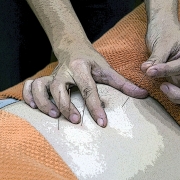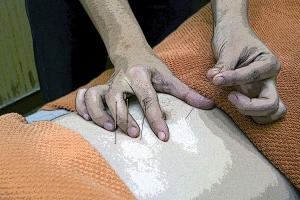Dampness Bogging You Down?
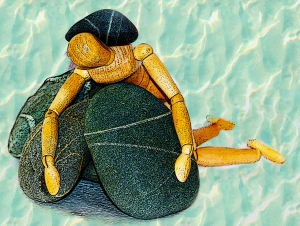 In Traditional Chinese Medicine, certain diseases or adverse health conditions can result from an excess of dampness in the body. The buildup of dampness is generally influenced by three things: an individual’s constitution (hereditary factors), an individual’s lifestyle (activity level and exposure to actual dampness in the external environment), and an individual’s diet (consumption of foods which either fortify or weaken the digestive system). The presence of dampness indicates an imbalance of Yin and Yang and a weakness of the spleen; dampness may also indicate weakness in the kidneys or lungs. If dampness continues to accumulate, this imbalance will bog you down, blocking the flow of life force energy (your qi) and ultimately leading to stagnation within the body.
In Traditional Chinese Medicine, certain diseases or adverse health conditions can result from an excess of dampness in the body. The buildup of dampness is generally influenced by three things: an individual’s constitution (hereditary factors), an individual’s lifestyle (activity level and exposure to actual dampness in the external environment), and an individual’s diet (consumption of foods which either fortify or weaken the digestive system). The presence of dampness indicates an imbalance of Yin and Yang and a weakness of the spleen; dampness may also indicate weakness in the kidneys or lungs. If dampness continues to accumulate, this imbalance will bog you down, blocking the flow of life force energy (your qi) and ultimately leading to stagnation within the body.
How Dampness Feels
When the humidity outside goes up in the summer months, most of us really feel it. Our physical surroundings—and even the air we breathe—can seem wet, heavy, and waterlogged. Dampness is essentially the equivalent of high humidity inside the body (a physical condition), and it can be experienced in a similar way. Your limbs may feel heavy and you might be slow to get moving. You may feel bloated, swollen, sluggish, and unmotivated. You may notice an increased level of mucus and fluid in the body, loose stools, and a tendency to gain weight. The effects of external dampness (if present in your immediate physical environment) may also cause joint pain, dizziness, and a heavy sensation within the chest. Dampness can occur as both damp-heat and damp-cold.
How Dampness Affects Your Health
In addition to the high-humidity effects felt above, the accumulation of dampness within the body can manifest in a number of other ways. Some of the most common signs of excess dampness include: allergies and sinus congestion, inflammation (arthritis), respiratory problems (asthma), skin conditions (cystic acne and eczema), urinary tract infections, yeast infections, digestive issues, headaches, and edema.
Treating and Preventing Internal Dampness
There is probably not much you can do about your inherited constitution and you may be limited in regard to changing your physical environment. You can, however, make significant changes to your diet with the aim of resolving (and preventing) the accumulation of dampness in the body. It’s imperative that you keep your digestive system running smoothly so that it can process nutrients, remove toxins, and help support the spleen and other organs. Be aware of what you eat and how it affects you (you might even want to keep a food journal). Avoid overeating, as well as excess coffee and alcohol. Limit processed foods, raw fruits and vegetables, refined starch, dairy products, sugar, and anything deep-fried. Consume foods and beverages at room-temperature. Bump up your intake of lean proteins, broths and soups, bitter spices, whole grains, and legumes. Exercise and adequate rest will also keep your digestive system in tip-top shape.
If you find the concept of dampness inside the body somewhat confusing, consider making an appointment with a licensed acupuncturist. They can help shed light on how this imbalance may be affecting you and suggest both treatment options and dietary/lifestyle changes to improve your overall health.
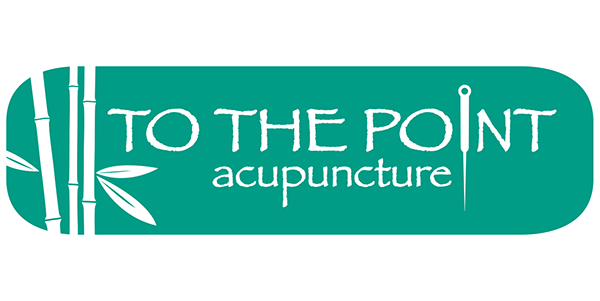
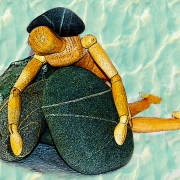
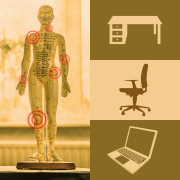
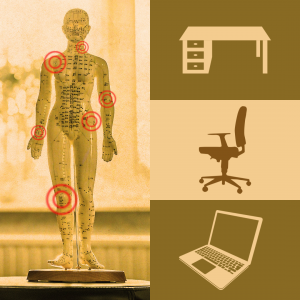 Dealing with poor ergonomics (and prolonged sitting) is a challenge in many work environments and office spaces. A less-than-ideal workstation can compromise your posture and result in stressful repetitive movement and overuse of key muscle groups. If you develop musculoskeletal pain, the effects can carry over into the rest of your life and affect your ability to enjoy other physical or social activities. Many people seek relief through nerve block injections, physical therapy, or anti-inflammatory medications. Traditional Chinese Medicine can also help you manage musculoskeletal pain, especially if you want to avoid taking medication or if you have tried other treatment modalities without success.
Dealing with poor ergonomics (and prolonged sitting) is a challenge in many work environments and office spaces. A less-than-ideal workstation can compromise your posture and result in stressful repetitive movement and overuse of key muscle groups. If you develop musculoskeletal pain, the effects can carry over into the rest of your life and affect your ability to enjoy other physical or social activities. Many people seek relief through nerve block injections, physical therapy, or anti-inflammatory medications. Traditional Chinese Medicine can also help you manage musculoskeletal pain, especially if you want to avoid taking medication or if you have tried other treatment modalities without success.